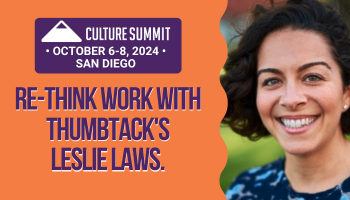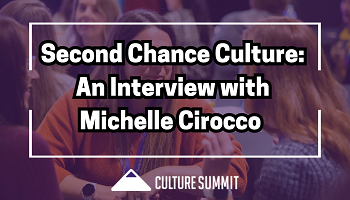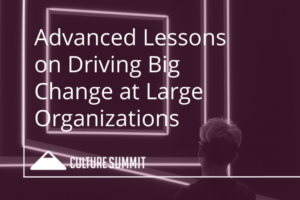Whether subbing out a CEO, troubleshooting a culture of bias, or reorganizing to pursue a new market opportunity, every organization will face a point in its development when it needs to change. And while we all know the basics of implementing any new initiative (get buy-in, craft a plan, follow through), there are nuances to driving big change within an organization that only those who have “been there, done that” can point out.
Today, Tatyana Mamut, General Manager and Director of Product Management, Design, & Engineering at Amazon Web Services, and Ellen Leanse, author, Stanford instructor, and former Apple executive, are going to walk us through five advanced (and sometimes counterintuitive) lessons on the best way to approach large organizational change to make it stick:
1. Ambiguity is what makes change hard
It’s natural to assume that the bigger a change is, the harder it will be to implement, and the smaller the change is, the easier it is to implement, but that’s not true. In fact, some very large, significant changes, like a CEO succession, can be fairly straightforward because there’s so much information around the topic. Organizational change is hard or easy not based on the size of the change, but on the ambiguity of the change process.
“Companies will often send out a press release about what a big change it is to replace a CEO, but most of the time it’s not a difficult change because it comes with a very well known playbook – we know what needs to be done and how to accomplish it,” says Mamut. “What makes a change hard is when there’s no playbook for it and it’s ambiguous, uncharted territory. You don’t know if you have a full commitment from other leaders to head down the same path, and the machinery and mechanisms aren’t there to support the change.”
2. Small changes can actually be more difficult to implement
Even with a clear playbook for change, small changes can often be more difficult to implement than large ones because we assume we can accomplish them under the radar, without looking at the big picture. But we can’t.
“If you try to change one or two small things at a time, the immune system of an organization will respond and show up to attack the changes,” says Mamut. “Small changes fail because people don’t take the time to design the larger holistic playbook and the context into which those changes will fit. If there’s a big goal you want to achieve, you may have to change everything all at once in an orchestrated and coordinated move rather than making small changes over a period of time.”
3. The most powerful change is changing how people spend their time
Whatever particular change you’re planning for your organization, try to focus on what impact it will have on how people spend their time at work. Not only will that give your team a definite example of how the change will affect their work but it will make it clear that the change is a holistic one, meant to impact everything about the way they do their job.
“The number one thing that makes a difference in creating sustainable culture change in companies is when they have certain agreements or encouragements about how time is spent,” says Leanse. “The most powerful change is getting your team out of their time rut of easy work and meaningless checklist items in favor of real, deep thinking. Companies that can change that can change everything.”
4. You can’t “Do it right and be done”
Implementing a big change within an organization requires a lot of planning, and that planning can be painstaking work. But no matter how much effort you put into the coordination and strategy behind the plan, the rollout of change is the beginning of the work, not the end. Going through the process with an open mind and a sense of persistence will yield insights, integration, and value.
“When change isn’t easy right away, people tend to want to say, ‘I did it right, and it didn’t work, so I give up,’ and the business world tries to reinforce that kind of thinking,” says Leanse. “But when you’re implementing a really big change, you’ll never get to a point when you can say, ‘My work here is done!’ Real, lasting change is built on asking hard questions and embracing and reacting to input, even when it disagrees with yours.”
5. Successful change is always top down
The first step in making any culture change within an organization is to get buy-in from the leadership team, but it’s even more important when it comes to driving big change in a large organization. The board of directors down must understand and commit to the plans for change (and why there’s a need for it) in order to give the change the support it needs to be truly transformative.
“Middle managers are always looking for stories of how a small team did something big in a bottom-up way, but it’s very rare,” says Mamut. “I’ve worked with CEOs on large transformation initiatives – including the transformations at Life Technologies and Procter & Gamble – and it’s always led by the top and coordinated with the support of the board of directors.”
How can you initiate this kind of support? Focus on getting an advocate on the board of directors: “Find at least one person on board who understands the change and can guide the conversation for the entire board around it, asking questions like, ‘Will we need to change our metrics of success, including our financial metrics?’” and ‘How are we going to assess the success of the C-suite for the next 2-3 years for the investment?’” says Mamut. “This person needs to not just be on board with the plan – no pun intended – but actually drive the strategy around it.”
If you’re on the verge of driving big change within your organization, we hope these tips will help get you in the right mindset to be successful. And of course if you have any experience to share, please let us know in the comments!



